This blog post is all about Mistakes to Avoid When Designing an entryway bench with shoe storage.
your entryway is one of the most-used areas in your home, and if your shoe bench setup isn’t functional and stylish, it’s going to drive you nuts.
In this post, I’m breaking down the most common mistakes people make when designing a shoe bench entryway—and exactly how to fix them so your space looks beautiful, stays organized, and actually works for your real life.
Posh Chic Cool is a participant in the Amazon Services LLC Associates Program, an affiliate advertising program designed to provide a means for sites to earn advertising fees by advertising and linking to Amazon.com. As an Amazon Associate, I earn from qualifying purchases at no extra cost to you. Disclaimer, Privacy Policy and Terms and Conditions

1. Choosing a entryway bench with shoe storage that does not fit your lifestyle
While it’s tempting to go for the trendiest shoe bench, it’s important to choose one that supports how you actually live day to day.
Let me give you some examples:
If you have kids and you choose a velvet-upholstered bench with no storage that’s too high for children to sit on comfortably instead of a bench with open cubbies or baskets kids can easily reach, and a durable, wipeable surface.
You’re very tidy or minimalist and you go for an open rack style that constantly displays messy-looking shoes instead of a closed storage bench to hide all clutter and keep the space visually calm.
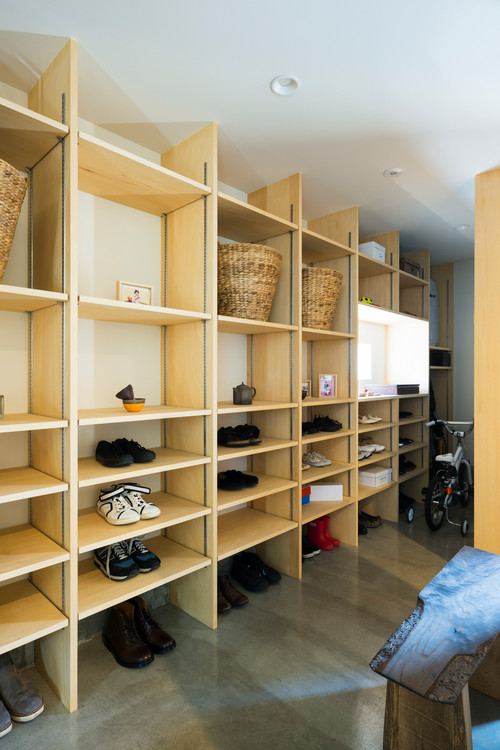
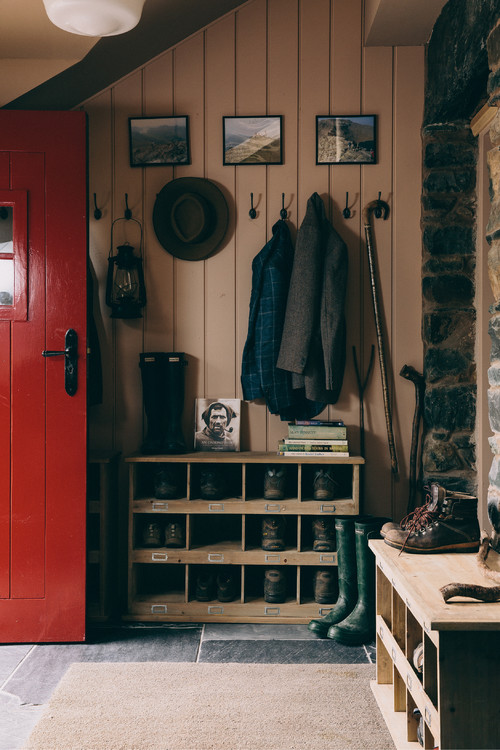
Or maybe you frequently have guests over, and instead of a wider bench with seating for two and enough space underneath for guest shoes, you have a narrow solo bench where guests end up standing or piling shoes at the door.
Think, what kind of lifestyle you have and make choices accordingly.
Don’t place the entryway bench with shoe storage where it blocks door movement
I know, I know! it sounds so basic! Yet sometimes we overlook things like door opening direction or Clarence space and place items.
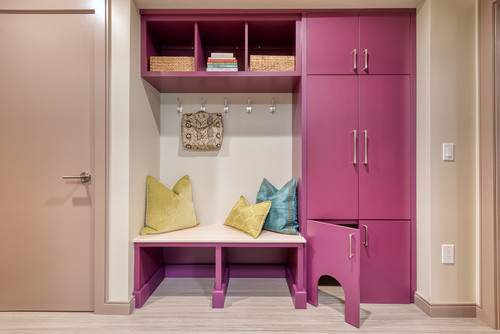
now, this probably does not apply to the built-in benches (hopefully) but I’ve seen spaces where the bench was Installed where it blocked access to a coat closet or utility cabinet.
Another example is where the bench was placed in a hallway near a door that opens into the same space.
That’s why it’s important to test the door swing and leave at least 36 inches of clearance if possible
Not designing for seasons (keep daily shoes accessible and out-of-season ones hidden)
One overlooked design mistake is treating your entryway shoe storage as static year-round. But your shoe needs change with the seasons—think winter boots vs. summer sandals—and your entryway should adapt accordingly.
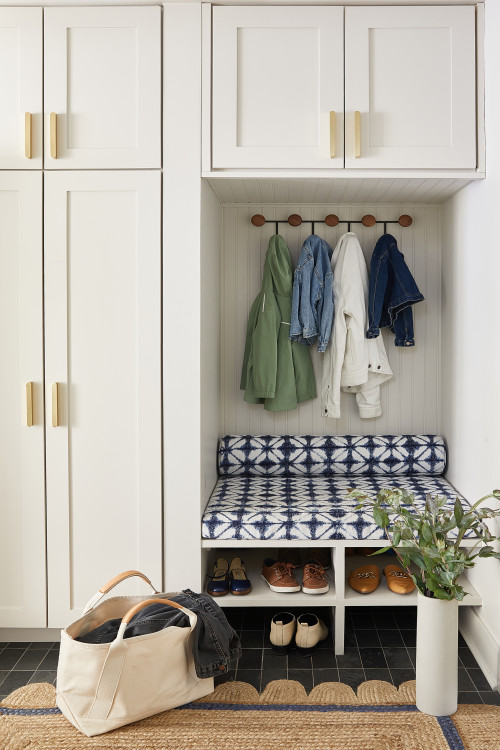
Daily-access shoes should be front and center!
Keep boots, waterproof shoes, and indoor slippers easily reachable in winter.
In summer, rotate in sneakers, sandals, or lightweight slip-ons.
Ideally, you want to use the lower cubbies for the current season’s shoes and store the rest in higher or closed compartments.
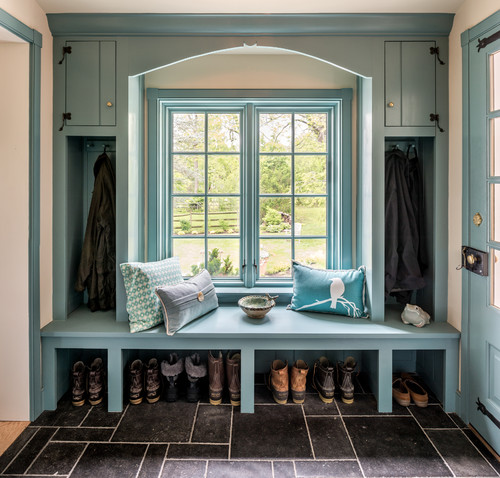
Alternatively, you can also designate separate zones if space allows: maybe use the shoe bench for everyday shoes, and a nearby tall cabinet or under-stair drawer for boots or summer items not in use.
overcrowding the bench surface with decor
I totally get it—you just got the cutest little shoe bench for your entryway and you’re dying to style it with candles, plants, pillows, trays, picture frames… the whole nine yards.
But here’s the thing: a shoe bench is meant to be used for sitting down, putting on shoes, maybe tossing your bag after a long day.
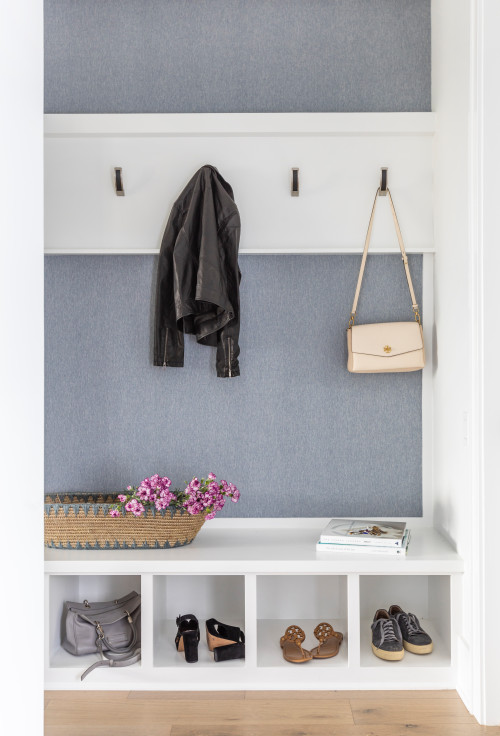
If the entire surface is covered in decor, it stops being functional and just turns into clutter central.
Here is what overcluttering looks like:
Three large throw pillows you constantly have to move just to sit down.
A tray with a candle, a plant, a little vase, and maybe even a diffuser… all squished together.
Random mail, keys, bags, and sunglasses landing there because there’s nowhere else to put them.
Holiday decor overload—yes, I’m talking full-blown pumpkin patches or six Christmas gnomes in a row.
Instead, try to take more conservative approach and pick 1-2 intentional decor pieces max. A small plant or a narrow tray for keys? Perfect. Keep it cute and useful.
Skip the big pillows. If you love a cozy touch, go for a thin bench cushion or one lumbar pillow that doesn’t need to be moved every time you sit down.

Add hooks or wall storage nearby so your bench doesn’t become a dumping zone for coats and bags.
Not using wall shelves to store items like hats and gloves
You’re Missing Out If You’re Not Using Wall Shelves for Hats + Gloves.

Let me paint a picture for you: it’s a freezing Monday morning, you’re late for work, and you’re tearing through baskets trying to find that one black glove (you know the one). Sound familiar? 🙃
This is exactly why wall shelves in your entryway are a game-changer—especially for storing small, easy-to-lose items like hats, gloves, sunglasses, or even dog leashes.

Install a slim floating shelf above your shoe bench or next to the door. Add small labeled bins or baskets—one for gloves, one for hats, maybe one for grab-and-go masks or sunglasses.
Use wall-mounted cubbies if you have a little more space. It gives that organized-mudroom-meets-designer-entry feel.
Add individual hooks or pegs underneath the shelf for hanging scarves, keys, or even a cute tote bag.
For a Pinterest-level setup, add name labels or initials so each family member has their own little drop zone.
Not picking multifunctional pieces (e.g., storage + seating)
Generally speaking, entryways are small. You’ve got keys, bags, coats, shoes, mail, maybe even your dog’s leash all competing for space. So if your bench is just for sitting, it’s not pulling its weight!
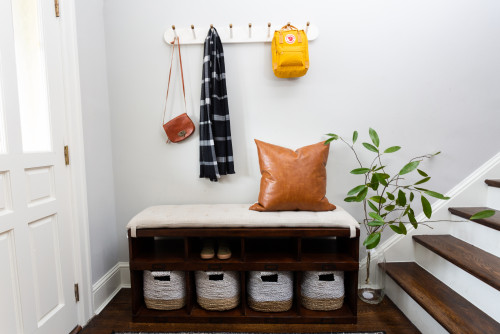
This is where multifunctional pieces come in. The best shoe benches aren’t just cute—they store, seat, and simplify your daily routine. Think of them as the overachievers of entryway design.
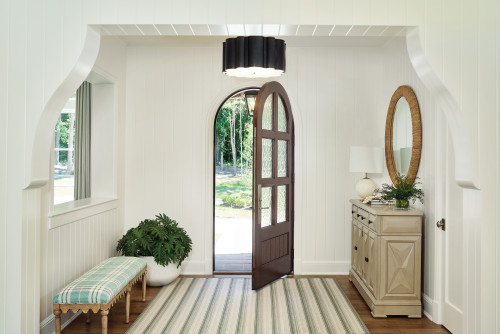
Try to integrate Lift-top benches that hide gloves, hats, or seasonal shoes inside.
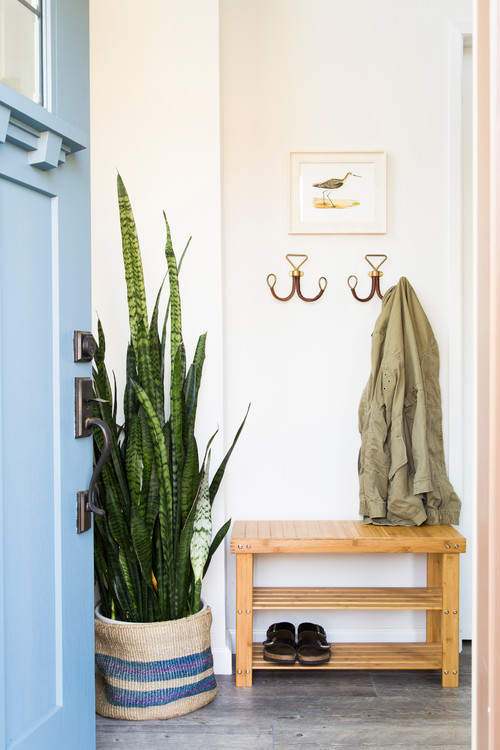
Benches with built-in cubbies or baskets so everyone has their own “drop zone.”
Drawer benches for keeping small items like keys, dog bags, or sunglasses organized and out of sight.
Shoe bench + coat rack combos (aka hall trees) if you’re really short on space but still want the full-function entry vibe.
Over-customizing, if you plan to resell your home
you want your home to feel personal, and you’re all about those dreamy DIYs (same). But if there’s even a tiny part of you thinking about selling in the next few years, pause before you go full Pinterest-crazy on your shoe bench setup.
Why? Because what feels super “you” might feel super “nope” to a future buyer.
If you are thinking about painting your shoe bench a bold statement color like neon green or hot pink (cute for now, but not for mass appeal), adding super-specific built-ins that only you know how to use, personalizing it with permanent decals, names, or quotes that aren’t neutral or broadly appealing, pause!
Instead, consider sticking with neutral colors (white, black, beige, wood tones) for large furniture pieces. Add your personality through removable decor like throw pillows, art, or baskets.
If you’re customizing a built-in, make it modular or easily removable—future buyers should be able to repurpose it as a coat rack, drop zone, or reading nook.
Think long-term: Would this piece still work for someone with a different style, or no kids, or no pets?
Add style with interchangeable accessories (like seasonal baskets or a swappable cushion cover) instead of permanent features.
Slippery surfaces—not adding grippers or rug pads
Your entryway might be looking straight out of a home decor magazine—but if your rug slides every time you step on it, it’s giving *chaos* not cozy.
And yes, even that gorgeous vintage runner needs a rug pad, no matter how “flat” it lays. Because let’s be honest: the last thing you want is to come home with your arms full of groceries and go full figure skater on your tile floor.
Consider adding a quality rug pad underneath your runner or doormat—look for one that’s non-slip and adds a little cushion for comfort.
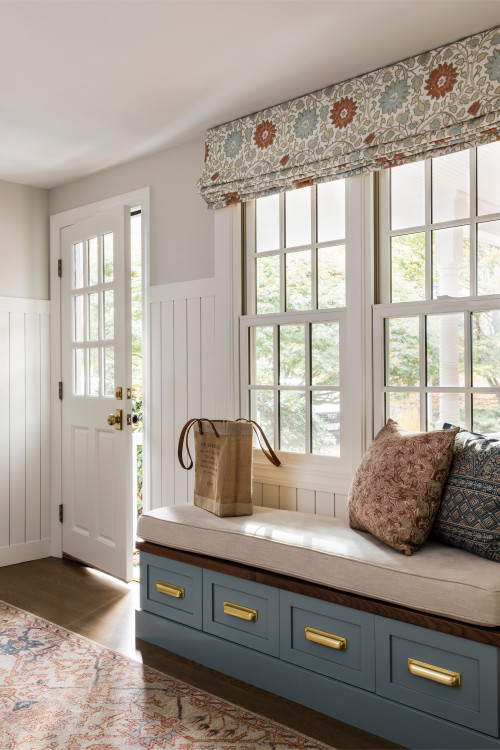
For smaller rugs or floor mats, use adhesive corner grippers to keep them in place without damaging your floors.
If your bench is on hardwood or tile, make sure the bench legs have anti-slip pads too, especially if you sit and slide it around often.
Bonus: Rug pads also protect your floors and extend the life of your rugs (so yes, totally worth the $20 investment).
Using overly bulky pieces in narrow entryways
We’ve all been there—you fall in love with a big, beautiful entryway bench online… only to realize it swallows your space IRL. If your entryway is narrow, bulky furniture is not your friend.
Here’s the truth: in a tight space, every inch counts. Oversized benches, chunky consoles, or extra-wide coat racks can make your entry feel cramped, cluttered, and not cute. And worse? You’ll end up bumping into it every single time you walk in.
Do not go for a deep bench that sticks out into the walkway and forces you to side-step around it, or a big cabinet or storage chest that blocks the door from opening all the way.
think twice before choosing a bench that’s so wide it eats up the whole wall, leaving no space for shoes, baskets, or even a rug.

Instead, measure your hallway first—then choose a piece no deeper than 12–15 inches for super narrow entryways.
Go for slim-profile benches that offer seating and storage without the bulk.
Try a floating bench or wall-mounted shelf + hooks combo to keep the floor space open and airy.
Use vertical storage like peg rails, wall shelves, or tall mirrors to draw the eye up and make the space feel bigger.
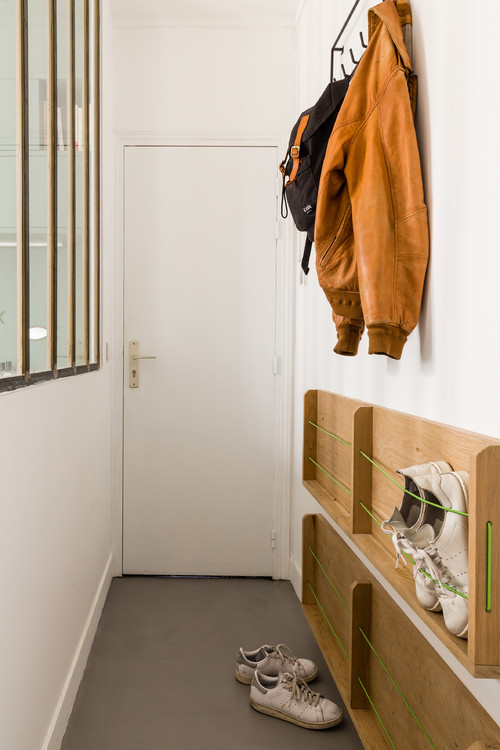
If you’re tight on space, skip the bench entirely and do a sleek wall-mounted drop zone with a mirror, tray, and hooks.
forgetting umbrella or bag storage
You’ve got your cute bench, your Pinterest-perfect rug, maybe even a mirror—but if you’re tossing your bag on the floor or dripping water across the room looking for a place to stash your umbrella… we’ve got a problem.
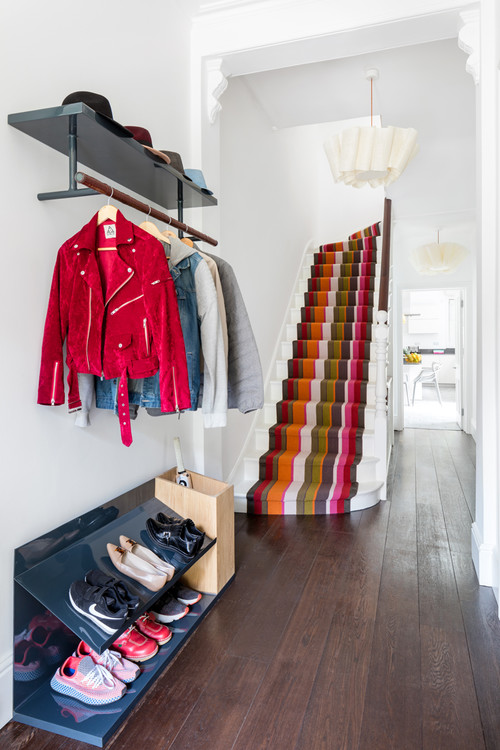
Your entryway is your first line of defense—and if you don’t plan for the essentials (like where your purse or that wet umbrella goes), it quickly becomes a clutter magnet or worse, a mini slip-and-slide.
Add a dedicated hook for your everyday bag—literally takes 10 seconds to install and will save your sanity.

Use a freestanding umbrella stand near the door.
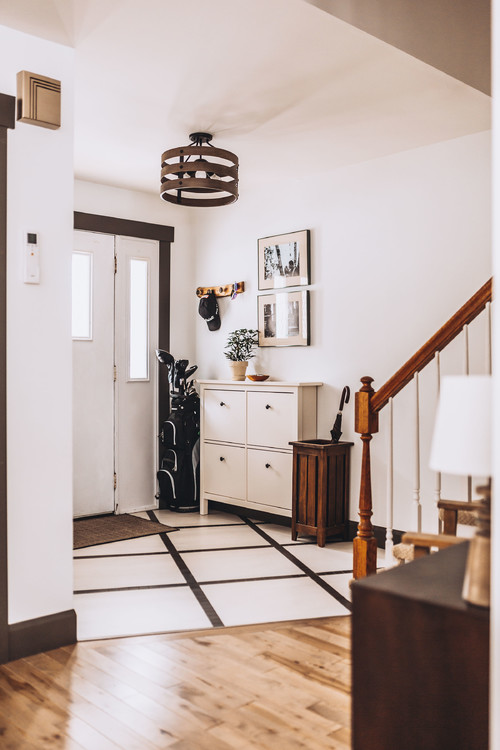
Choose one with a drip tray so your floors stay dry and clean.
Not designing hidden storage for cleaning supplies (wipes, sprays) nearby
Here’s something no one talks about when designing a cute entryway: where the heck do you keep your cleaning stuff? the quick-grab things like disinfecting wipes, shoe sprays, or a lint roller when your black coat is suddenly covered in fuzz.
If you don’t plan for it? You’ll end up stashing these things in random rooms—or worse, leaving them out in plain sight (and we’re not ruining that aesthetic after we finally got the bench, hooks, and mirror right!
Use a lidded basket or small storage bin under your bench. Label it “entryway essentials” and stash wipes, lint rollers, odor spray, or a magic eraser in there.

If your bench has drawers or cubbies, dedicate one just for quick-clean items (even better if it’s closest to the door).
You can also opt for a small cabinet or side table with a door—perfect for holding a mini caddy of cleaning must-haves while keeping everything out of sight.
Not using an entry mat to protect your flooring
Style means nothing if your hardwood floors are getting wrecked every time someone walks in!
let’s talk about something that sounds boring but is actually entryway gold: the humble entry mat. If you’re not using one, you’re missing out on a simple (and seriously cute) way to protect your floors and upgrade your space.
Because muddy shoes, salty snow boots, sandy flip-flops… they all end up at the front door. And if you don’t have a proper mat? You’re basically letting all of that mess party directly on your beautiful floors.

Add a durable indoor/outdoor mat right inside your front door. Look for one with a textured surface that catches dirt and absorbs moisture.
For high-traffic homes (kids, pets, lots of guests), go for a low-pile, machine-washable option. Bless whoever invented those.
Not installing a nearby charging station
Adding a discreet charging spot near the door? Game. Changer.
It keeps your tech ready to go, cuts the clutter, and gives you one less thing to think about when you’re running out the door at 8:03 with wet hair and a half-eaten granola bar.
Set up a small tray or drawer organizer inside a nearby console or bench with a hidden power strip for your daily devices.
Use a charging dock right by the door so you can drop your phone, watch, and earbuds all in one spot—super sleek and efficient.
Go vertical with a wall-mounted shelf and add a few charging cables + a USB wall plug. Hide the cords with cable clips or a cord cover (thank me later).
Not opting for washable or wipeable cushion covers
your entryway bench sees everything. Dirty shoes, wet coats, muddy backpacks, coffee spills, dogs jumping up to say hi… and if your cushion cover can’t handle that? You’re setting yourself up for frustration (and a whole lot of spot cleaning you do not have time for).
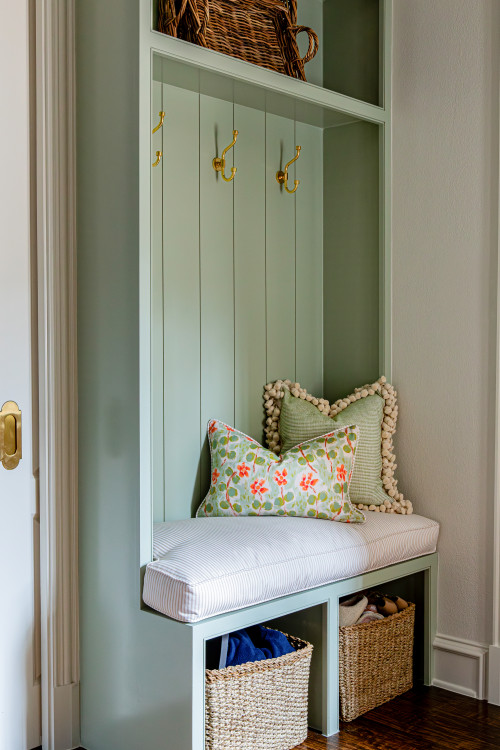
Your entryway isn’t just a photo op—it’s where life happens. Which means choosing washable or wipeable cushion covers isn’t just smart—it’s necessary.
I would highly recommend to go washable. Look for cushions with zip-off covers you can toss in the washer (bonus if they’re cotton, performance fabric, or linen blends that hold up).
Go wipeable. Faux leather, outdoor fabric, or even stain-resistant canvas = super easy to clean with a damp cloth. Perfect for homes with kids, pets, or unpredictable weather.

Layer a washable throw or mat over the cushion for extra protection that still looks cute and intentional.
Lack of Cohesive Design: Overlooking color to tie the bench in with your decor
Let’s talk about one of the most common styling mistakes: not tying your shoe bench into the rest of your home’s design with color. I know—it’s easy to fall in love with a bench you see online and click “add to cart” without thinking about how it’ll actually look in your space.
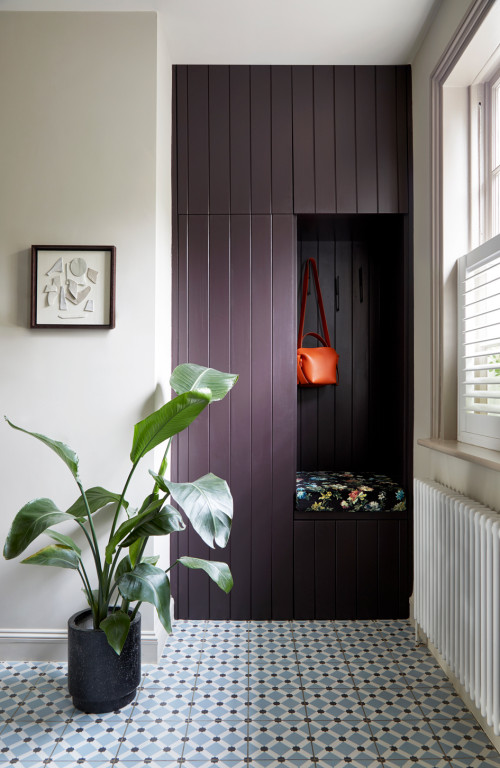
But here’s the truth: if your bench is completely disconnected from your walls, floors, or surrounding decor, your entryway will feel off—like a puzzle piece that doesn’t fit.
Avoid these common mistakes: a rustic dark wood bench dropped into an all-white, modern home with cool tones = visual confusion.
A bright blue cushion that clashes with your soft neutral palette.
Silver hardware on the bench when everything else nearby is gold or black.
No repeating color, tone, or texture to help the bench feel like part of the space—it just kind of… floats.
Instead, pull in one or two colors from nearby elements—like your wall art, rug, or door hardware—and repeat them in your bench finish or cushion.
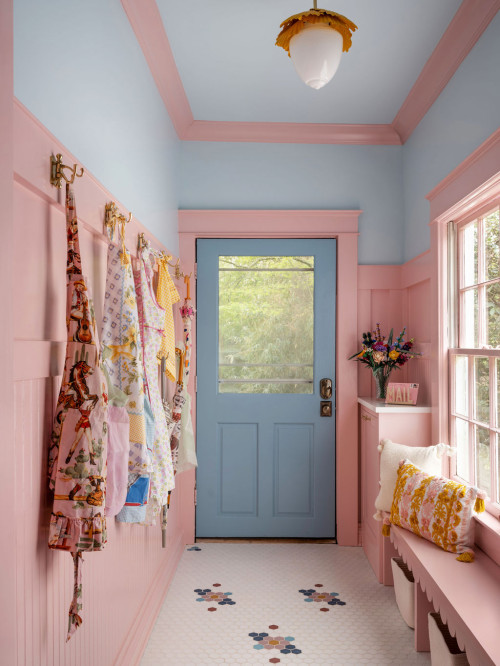
Conslusion
Your entryway sets the tone for your entire home, so it’s worth getting it right. By avoiding these common mistakes—from choosing the wrong bench to skipping smart storage—you can create a space that’s not just pretty to look at but actually makes your day easier.
Whether you’re dealing with a tiny hallway or a full-on mudroom, the key is finding that perfect mix of function, style, and flow. And once you do? You’ll never go back.
Pin this for your next refresh and drop a comment below if you’ve made any of these mistakes (no judgment—we’ve all been there!).




